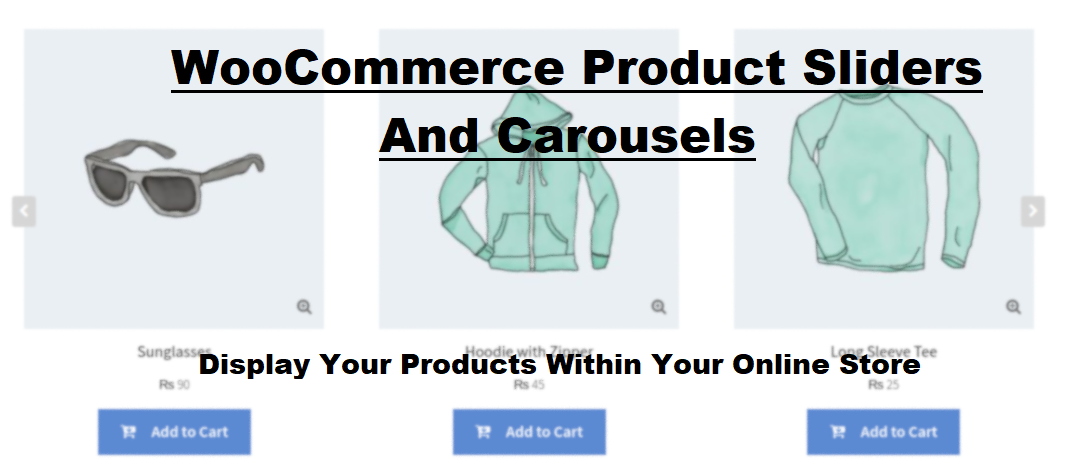The Best Guidance To Create A Web Design Style Guide
Keeping up consistency is fundamental to a brand’s prosperity. However, if you have a few people involved in creating and keeping up your site, and they aren’t on the same page with regards to how to depict your brand, consistency becomes challenging to accomplish.
A design style guide can furnish your group with the tools to all the more likely keep up your brand’s picture, and give your site’s clients a reliable content. As it were, by setting up more clear and increasingly efficient communication across your group, style guides improve the experience of your brand for both the people creating it and those experiencing it.
In this article, we’ll talk about what top website designing company style guide and why it’s essential to your site. At that point, we’ll disclose how to make one for your site in only five stages. We should get moving!
- An Introduction to Brand Style Guides
A brand style guide is a lot of standards for how your brand will be depicted, both on the web and mobile. Consider it the foundation of your brand story. This includes its website architecture, tone, and content, how you handle customer interactions, and that’s only the tip of the iceberg. Organizations are based on customers’ recognitions, so anything that affects how your site’s group of spectators sees your brand can be considered.
Some specific areas of enthusiasm for your style guide may include visual plan elements and decisions, for example, shading plan, iconography and typography, site format, pictures, and logos (including your promoting materials). Your web duplicate, ‘about’ page, blog, and online life content, should likewise coordinate your brand character according to clients.
Any elements related to client interactions, including live visits and structures, likewise affect how customers feel about your brand. How rapidly you react, what you state, and how you say it can transform a lead into a promoter for your brand. At the point when done inadequately, it can likewise lead them towards your competition instead.
It’s critical to take note of that a style guide, or a brand book is different from a pattern library. While pattern libraries are likewise valuable, they just rundown the fundamental elements of your brand’s visual identity. They don’t give any direction concerning how those elements should be utilized. For instance, without a style guide, your group may have a duplicate of your logo within reach. However, they won’t realize how to manage it.
- Importance of Brand Style Guide to Your Website
Having a brand style guide for your site keeps all colleagues on the same page about how to introduce your content to the world. It’s additionally useful if you need to procure outside fashioners or engineers to chip away at your site, as it can keep them from taking off with their thoughts and leaving your site looking disjointed.
Consistency is critical to a brand’s prosperity. Clients will all the more rapidly perceive your brand if you have a particular style that you use all over the place. Likewise, if all parts of your brand’s identity aren’t the same across your site, web-based social networking platforms, and anyplace else it shows up, clients may wind up confused and wonder if it’s everything part of the same brand.
Executing an intensive brand style guide when you acquire new colleagues (or even specialists, for example, visual planner or web engineer) will fix the standard for consistency out of the entryway. The more consistent you can be, the quicker you’ll have the option to begin assembling your brand identity and acquiring rehash clients.
- The most effective method to Create a Brand Style Guide for Your Website (5 Key Steps)
There are a few components to think about when creating your brand style guide. In particular, building it around your vision for your brand will empower you to art brand guidelines that help you accomplish your objectives. How about we talk about how that procedure functions.
Stage 1: Decide Where Your Style Guide Will ‘Live’
Style guides can be created in an assortment of organizations. Where your guidelines will live is up to you, yet recall that a style guide is most helpful when it unmistakably imparts your requirements and is easily accessible to any individual who needs to utilize it.
A few organizations make subdomains for their websites that specify page design, picture and logo situation, text style, and that’s just the beginning. The upside of utilizing a subdomain is that it’s a visual representation of your style, instead of only a bulleted rundown of standards. Anybody using your guide will see definitely what the content they’re creating should resemble.
Then again, project management tools, for example, Trello, are additionally a valuable alternative. They’re made to be utilized by groups, so it’s anything but difficult to impart your guide to any individual who may require it. This sort of hardware likewise makes it easy to organize information in a manner that gives clear direction to the people dealing with your brand.
If you need a snappy and easy approach to make a branding style guide, there’s nothing amiss with reviewing it as an archive. Including pictures with models can clarify any intricate focuses. Ensure the record is anything but difficult to share, as you’ll need to make it accessible to everyone who creates content related to your brand.
Stage 2: Clarify Your Brand’s Mission
You may have a thought of what you need to achieve with your site; however, working out a clear and solidly settled statement of purpose is as yet significant. It will be a valuable update for yourself and make it simpler to impart your objectives to other people chipping away at your brand.
When creating your statement of purpose, make a point to concentrate on your brand’s motivation, and be specific about your qualities and what you want to achieve. You’ll need to convey your huge picture objectives, while likewise providing solid models that are simple for people to recollect.
Stage 3: Define Your Brand’s Tone and Voice
Your brand’s ‘tone’ is the general inclination it passes on to your intended interest group, while its ‘voice’ is its specific character. Tone can be easily communicated through pictures and written content. Voice will likewise run over in written content and interactions with clients.
Your brand’s tone and voice regularly characterize how clients associate with your content, and what feelings it inspires in them. Utilizing the same style consistently encourages clients to become more acquainted with your business ‘by and by.’ Just as an individual who is kidding around one moment and irate the following can be off-putting, unexpected shifts in tone and voice will probably befuddle your clients.
Consolidating tone and voice into your style guide can be precarious. Be that as it may, you can begin by posting characteristics you need your content to express, and feelings you’d like it to trigger. It’s likewise brilliant to utilize your brand’s tone and voice to make the guide itself. If you’re going for a loose and welcoming vibe, for instance, toss in a couple of emoticons or some slang. Then again, progressively, formal brands will need to exhibit their guidelines directly.
Stage 4: Determine Guidelines for Your Brand’s Visual Elements
In your style guide, you’ll likewise need to include specifications on your logo’s utilization. This includes when and where it will be shown. If you generally need your logo to be set as the thumbnail for blog entries, for instance, you would need to refer to this in your style guide (so everyone who deals with blog content will realize what to do).
Thus, setting rules about what sorts of pictures will be allowed can enable you to keep up brand consistency across your site. For instance, you might need to specify whether images are fitting for use in blog entries, or if they’re unreasonably easygoing for your brand’s tone. Referencing licensing requirements to evade copyright encroachment would likewise be astute.
Creating an unmistakable rundown of all the brand hues, typefaces, symbols, and designs you need to use for your site will guarantee that the people taking a shot at your brand realize these specifications exist. It will keep them from forcing their inclinations and help those with well-meaning goals evade botches, for example, utilizing a shading palette that is only a couple of conceals off from your logo.
Stage 5: Allow Your Style Guide to Evolve With Your Brand
As your brand develops and changes, your style guide will presumably need to do likewise. Criticism from clients, changes in industry measures, and modifications to your statement of purpose may mean you’ll need to modify your tone or certain visual elements.
Hermit Chawla is a Marketing Manager at Sprak Design. He would love to share thoughts on Web Design Company India, Lifestyle Design, Branding Firm, Exhibition design etc..
What Is WooCommerce Product Slider and Why Your Store Needs It
Why Do Product Images Matter So Much in Online Stores? When someone visits an online store the…
0 Comments9 Minutes
How to Streamline Your Customers’ Shopping Experience?
The goal for any online store is to make shopping as smooth as possible. When visitors move…
0 Comments8 Minutes
Strengthening Brand-Customer Relationships Through Gamified Loyalty Programs
Creating lasting connections with customers has become increasingly vital as the marketplace grows…
0 Comments6 Minutes
How to Use SEO and SEA Together in Search Engine Marketing
In digital marketing, search engine marketing (SEM) plays a critical role in improving online…
0 Comments10 Minutes
Content Marketing Growth Hacks: Real Shortcuts to Drive Traffic
Are you still lagging in content marketing? Sticking to these old strategies seems…
0 Comments10 Minutes
How to Build a Strong Local Following Using Social Media Marketing
In the days of likes, shares, and stories, local businesses have a golden opportunity to create…
0 Comments9 Minutes
Why WooCommerce is the Best Choice for Your Online Store?
WooCommerce stands out as a top option for anyone looking to build an online store. This platform…
0 Comments8 Minutes
How to Use AI-Powered SEO Tools for WordPress eCommerce
SEO is a critical factor in the success of any e-commerce WordPress store. As competition…
0 Comments11 Minutes








